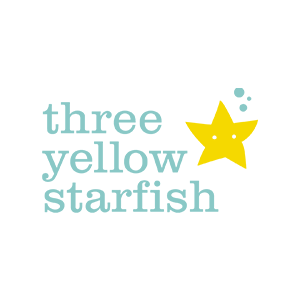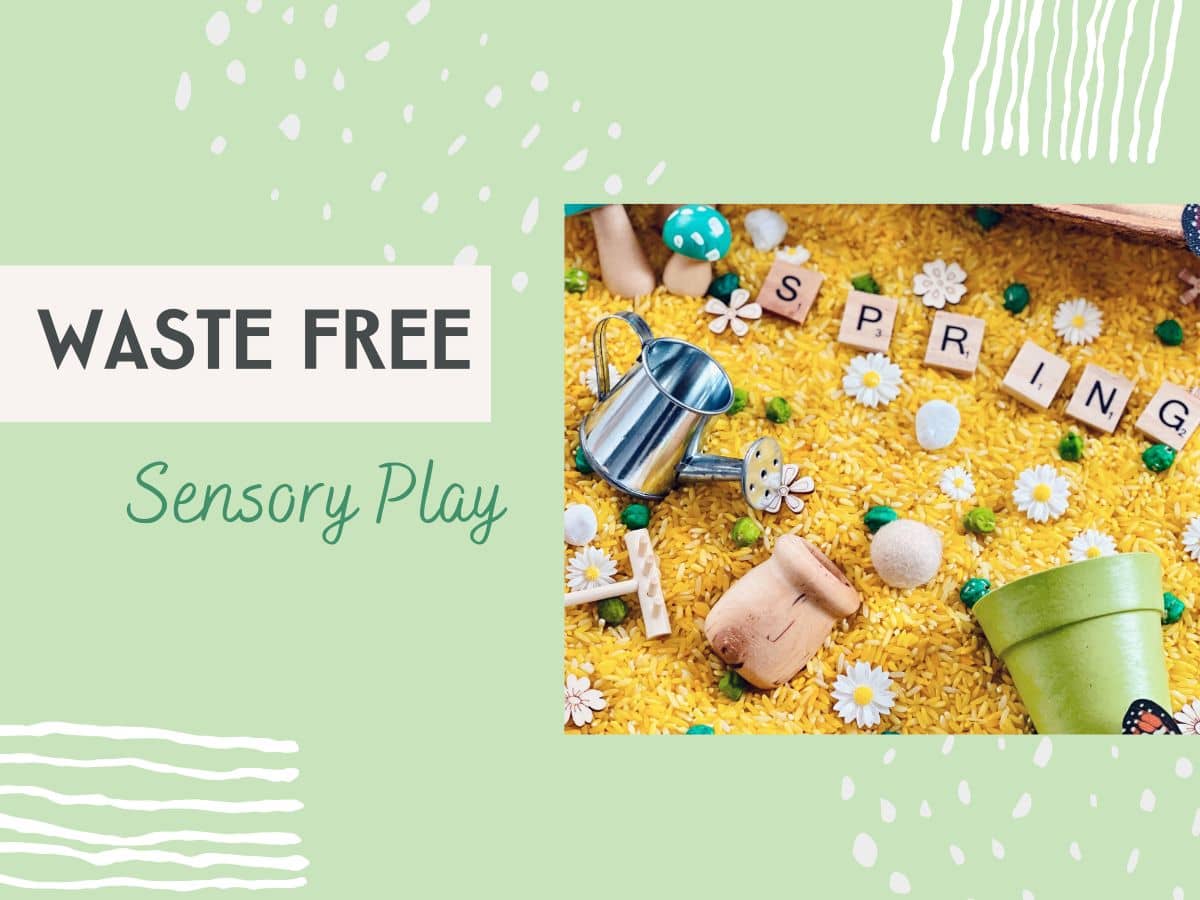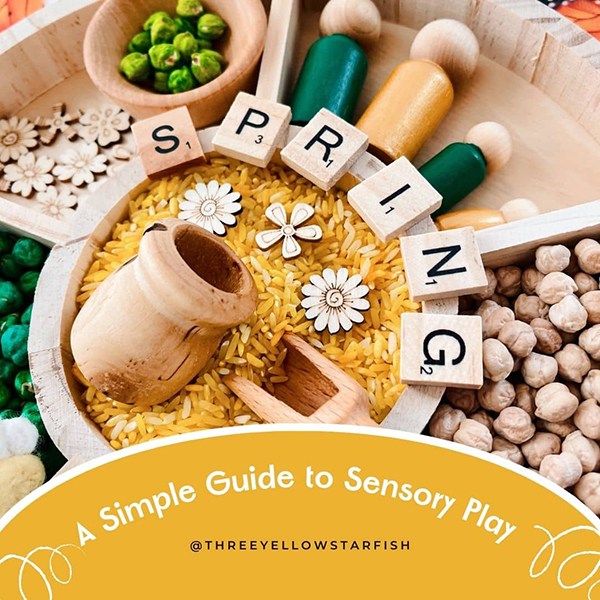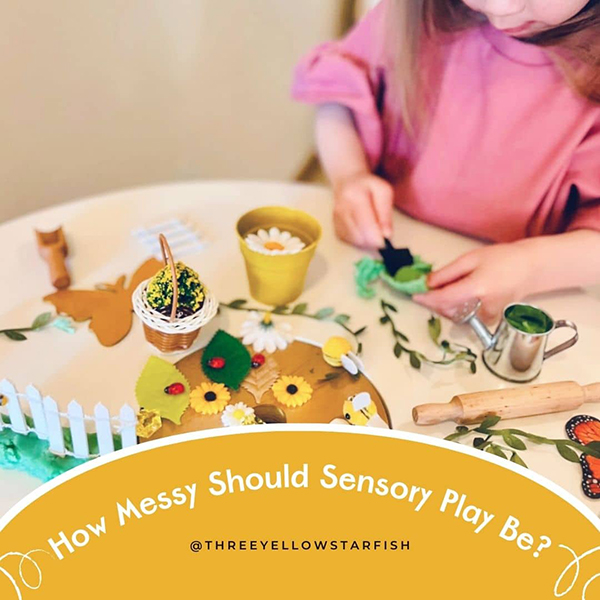Sensory play bins are an absolute game-changer! They are a great way for kids to learn through play, and they often come with different fillers that kids can touch, smell, and even taste! While sensory play bins offer many benefits, creating and maintaining them can often lead to a significant amount of waste. Luckily, there are many ways to repurpose sensory bin fillers and extend their use beyond just playtime. In this blog post, we will explore some different ways to reuse sensory bin fillers so you can keep enjoying sensory play without causing any harm to the environment.

Waste-Free Sensory Bin Fillers
You don't need fancy stuff to fill a sensory bin - just raid your pantry for things like rice and pasta. You could even go for something fancier like water beads or kinetic sand. But before you dive in, check out these tips to make the most out of your next sensory adventure!
Use Natural Materials
One of the easiest ways to eliminate waste with sensory play bins is to use natural fillers, such as sand, dirt, rocks, and leaves. You can easily reuse or recycle them when you don't need them anymore. Plus, they're biodegradable, which means they won't contribute to the growing waste problem.
Use Recycled Or Upcycled Sensory Bin Fillers
You can reduce waste when filling your sensory play bins by using recycled or upcycled materials. This includes things like cardboard boxes, old plastic containers, and even fabric scraps. This approach is not only environmentally-friendly, but it can also save you money since you won't need to buy new materials. You can even use dry food products that are past their sell-by date, as stores often throw them away anyways.
Use Reusable Storage Containers
Reusable storage containers like glass jars or metal tins are an eco-friendly way to organize your sensory bin filler. This reduces waste and also makes it easy to access your sensory play materials. You can use airtight storage containers or zip lock bags to keep dry fillers for years. And if you want to ensure that your sensory play materials are germ-free, you can also keep tubs of fillers in the freezer for 24 hours.
Repurpose Sensory Bin Fillers
If the fillers in your sensory play material are no longer suitable for your sensory bin, don't discard them. Instead, consider repurposing them for other sensory play activities or crafts. For example, you could use sensory play sand for different art projects or use dried beans to make a sensory bottle.
Compost Organic Materials
Fill your sensory play bin with natural fillers, such as leaves or grass, to reduce waste and promote a healthier environment. When playtime is over, compost them to create nutrient-rich soil for your garden. Choose biodegradable and natural materials that can be safely added to a compost bin, and make sure they are taste-safe for little ones. If composting is not an option, you can still safely dispose of these mostly biodegradable items.
Donate Materials
If you have sensory bin fillers that you don't need anymore, consider donating them to a nearby school or daycare center. This is a great way to reduce waste, while also providing other children with the opportunity to engage in sensory play.
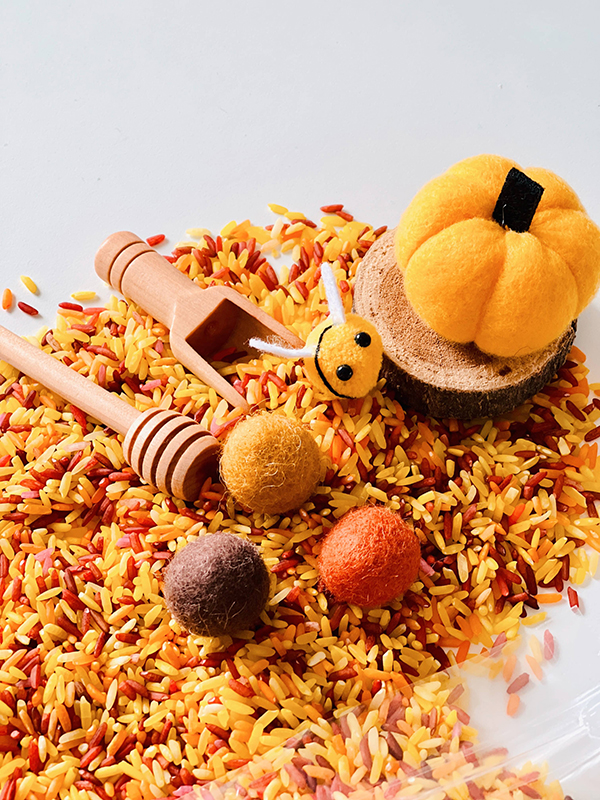
More Ways To Reuse Sensory Bin Fillers
So, what can you do with sensory bin fillers once the playtime is over?
Art Projects
Art projects are a fantastic way to incorporate sensory bin fillers into your child's creative activities. For example, you could use colored rice or dyed pasta as a fun and unique way to create a colorful and textured collage. You could also use dried beans or lentils to create textured paintings or to add a unique touch to your mixed media projects.
This cute craft is just another way to use your sensory bin mixes. All you need is cardboard scissors, glue, chickpeas or pasta. This craft can be done after the sensory bin activity is over to extend the play.
Gardening
Sensory bin fillers such as dirt, sand, and gravel can be used to create mini gardens. These materials are perfect for creating a sensory-rich gardening experience, where children can explore the different textures and scents of various plants. Simply add some soil to a small container and then add the sensory bin filler to create different textures and layers. You can then plant some seeds and watch your garden grow and you can also teach your child about the importance of caring for plants and how they grow.
Sensory Bottles
Another fun way to leftover sensory bin fillers is by creating sensory bottles. Simply fill a clear plastic bottle with your favorite sensory bin filler and then add some water and glitter. You can also add small toys or objects to create a fun and interactive sensory experience. This allows you to have a fun and engaging sensory bottle that your child can use to explore different colors, shapes, and textures.
Decorative Accents
Sensory bin fillers such as rocks, shells, and sand can be used as decorative accents around your home. Fill a vase with colorful sand or display your favorite seashells in a decorative bowl. You can even use dried flowers and leaves from your sensory playtime to create beautiful and unique wall art.
Science Experiments
Many sensory bin materials can be used in science experiments. For example, you could use baking soda and vinegar with colored rice to create a fun and fizzy volcano experiment. You could also use different fillers to explore density, magnetism, and other scientific concepts. By using sensory bin fillers in science experiments, you can create a hands-on and engaging learning experience for your child.
Waste Free Sensory Bin Fillers - Final Thoughts
There are many creative and fun ways to reuse sensory bin fillers after playtime. By repurposing these materials, you can promote sustainability and help reduce waste. So, the next time you're cleaning up after sensory playtime, don't toss those sensory bin fillers just yet. Instead, consider one of these fun and creative ways to give them a new life!
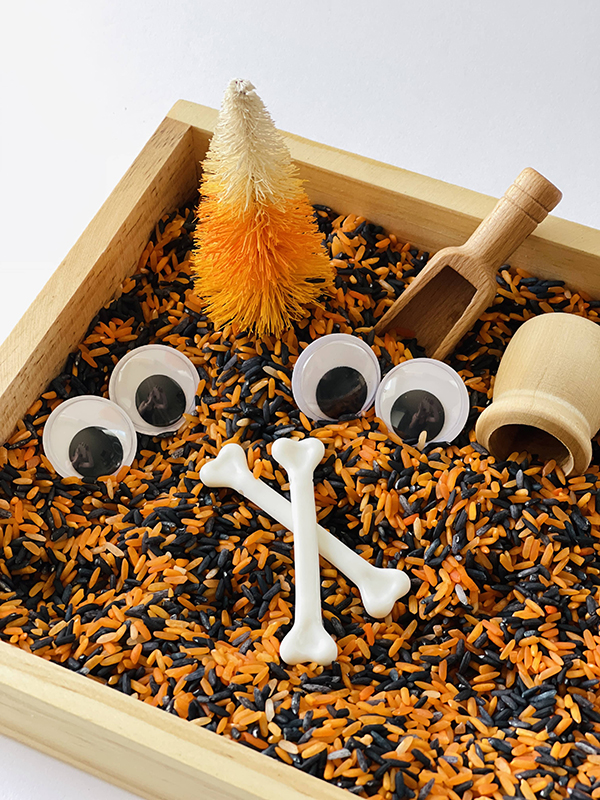
If you're interested in learning more about sensory play, be sure to check out our blog. We have plenty of resources and ideas to help you and your child continue to explore the world of sensory play, including tips for setting up a sensory bin, DIY sensory bin filler ideas, and much more!
